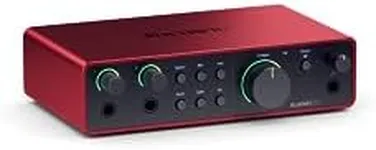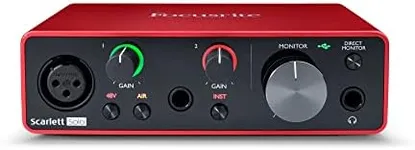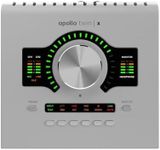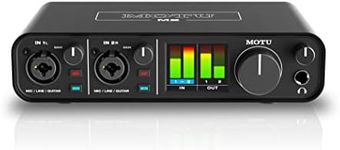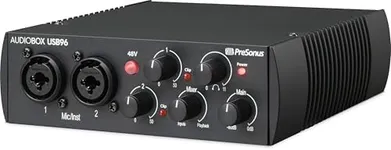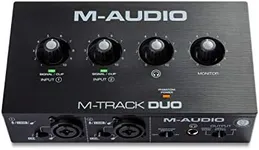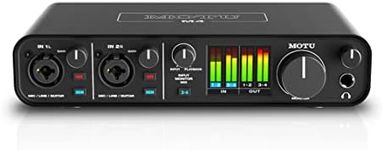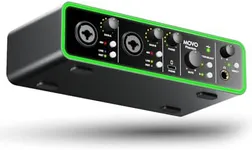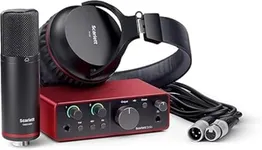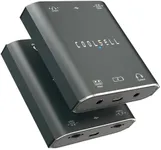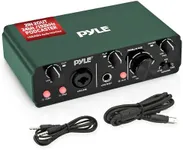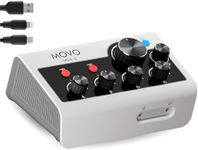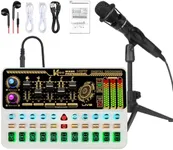Buying Guide for the Best Audio Interface For Home Studio
Choosing the right audio interface for your home studio is crucial for achieving high-quality sound recordings and smooth workflow. An audio interface is a device that connects your instruments, microphones, and other audio gear to your computer, converting analog signals to digital ones and vice versa. To find the best fit for your needs, consider the following key specifications and how they align with your recording goals and setup.Number of Inputs and OutputsThe number of inputs and outputs on an audio interface determines how many instruments or microphones you can connect simultaneously. This is important because it affects your ability to record multiple sources at once. If you only plan to record one instrument or vocal at a time, a 2-in/2-out interface might suffice. However, if you want to record a full band or multiple sources simultaneously, look for interfaces with more inputs and outputs, such as 8-in/8-out or higher. Consider your current and future recording needs to choose the right configuration.
Audio Quality (Bit Depth and Sample Rate)Audio quality is defined by the bit depth and sample rate of the interface. Bit depth affects the dynamic range of your recordings, with 24-bit being the standard for professional quality. Sample rate determines the frequency range captured, with 44.1 kHz being standard for CDs and 48 kHz for video. Higher sample rates like 96 kHz or 192 kHz offer more detail but require more storage and processing power. For most home studios, 24-bit/48 kHz is sufficient, but if you aim for the highest quality, consider interfaces that support higher sample rates.
ConnectivityConnectivity refers to how the audio interface connects to your computer. Common options include USB, Thunderbolt, and PCIe. USB interfaces are widely compatible and easy to use, making them a popular choice for home studios. Thunderbolt offers faster data transfer and lower latency, ideal for more demanding setups. PCIe interfaces are typically used in professional studios for their high performance but require installation inside a computer. Choose the connectivity that matches your computer's ports and your performance needs.
Phantom PowerPhantom power is necessary for powering condenser microphones, which are commonly used in studio recordings for their sensitivity and accuracy. Most audio interfaces provide phantom power (usually +48V) through their XLR inputs. If you plan to use condenser mics, ensure the interface you choose has phantom power capabilities. If you only use dynamic microphones, which do not require phantom power, this feature may be less critical.
LatencyLatency is the delay between the input signal and the output signal. Low latency is crucial for real-time monitoring and recording, as high latency can be distracting and affect performance. Interfaces with direct monitoring features allow you to hear the input signal without any noticeable delay. Look for interfaces with low-latency drivers and direct monitoring options to ensure smooth recording sessions.
Preamp QualityPreamps amplify the signal from your microphones and instruments to a usable level. The quality of the preamps in an audio interface can significantly impact the clarity and warmth of your recordings. High-quality preamps provide clean gain with minimal noise and distortion. If you prioritize pristine sound quality, look for interfaces known for their excellent preamps. For basic home recording, standard preamps in most interfaces will be adequate.
Software CompatibilityEnsure the audio interface is compatible with your digital audio workstation (DAW) and operating system. Some interfaces come with bundled software, which can be a great value if you don't already have a DAW. Check the manufacturer's specifications for compatibility with your preferred recording software and operating system to avoid any issues during setup and use.
